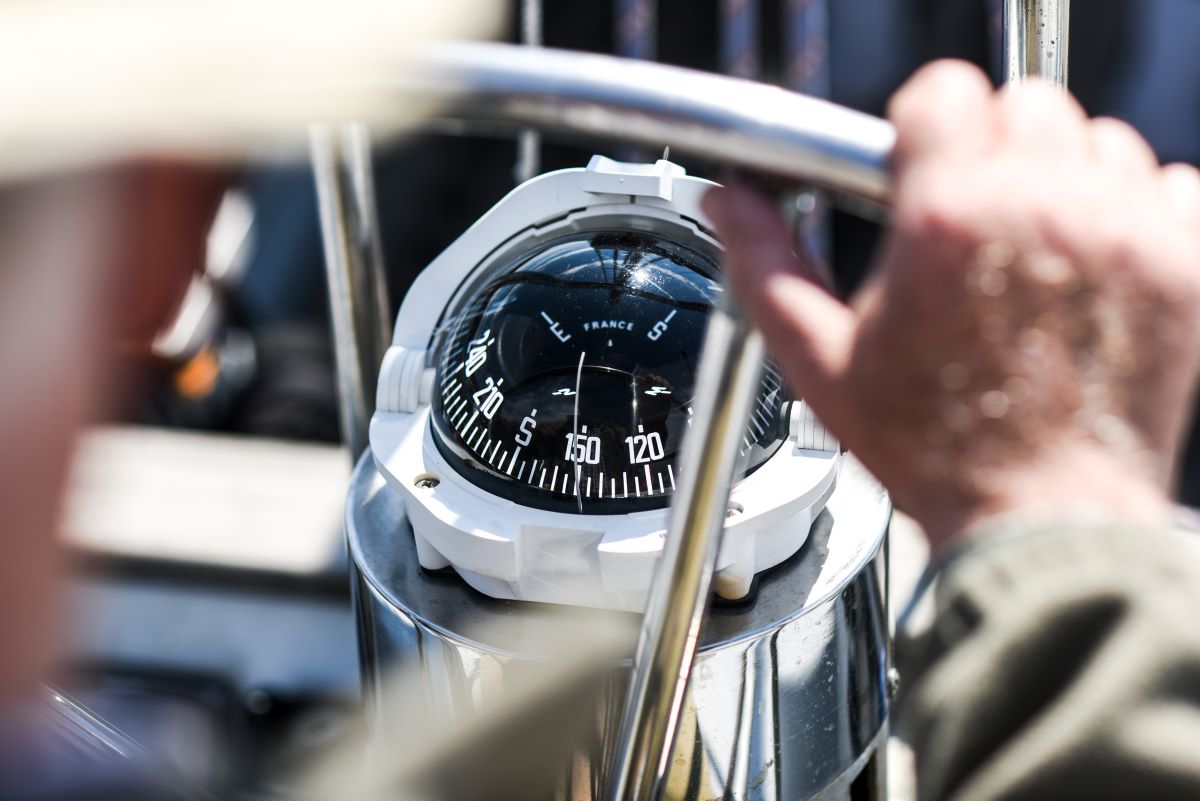
Magnetic boat compass: The complete guide
Magnetic compasses have been around for years and are still used for navigation up to this day. They provide us with a bearing reference (north) and can thus reliably lead the way from A to B.
These compasses are extremely useful on boats, and they don’t even require a power source or sunlight to function. So just how do these magnetic compasses work? Why do they always point north? And, do other types of compasses exist?
In this article, our National Boating Safety School experts will tell you everything you need to know about these incredible navigation devices.
How does a magnetic boat compass work?
A compass is a navigational tool used to find one’s bearings at sea. By displaying the north orientation reference on a horizontal plane, it helps navigators to measure other horizontal angles in degrees, and thus head in the right direction.
A magnetic compass helps directing people by aligning itself with the Earth’s magnetic field to indicate north. When using a magnetic compass, it’s important to distinguish between compass north (can be influenced by nearby metallic objects), magnetic north (seen on maps) and true north (geographic North Pole).
The potential angle shift that can occur between compass north and magnetic north is called deviation. Similarly, the offset between true north and magnetic north is called magnetic declination.
What are the regulations concerning magnetic compasses?
Magnetic compasses are essential tools for finding your way around at sea. The fact that they require no power source and remain functional even in poor visibility puts them at the centre of our required boating safety equipment list.
Canada’s Navigation Safety Regulations state that all vessels, except those less than 9 metres in length, which remain within sight of navigation beacons, must be equipped with a standard magnetic compass that is independent of any electrical power supply.
What are the different types of boat compasses?
To navigate a boat, it is therefore necessary to have a compass on board. In addition to the magnetic compass, there are other navigational devices that can also indicate north. Here’s an overview of the different types of boat compasses and their specific features.
The gyroscopic compass
Unlike the magnetic compass (which shows compass north), the gyroscopic compass shows true north (geographic North Pole). As its name implies, this type of boat compass uses the gyroscopic motion to provide stable, accurate information. Unlike traditional magnetic compasses, gyroscopic compasses are not affected by changes in the earth’s magnetic field.
The electric compass
The electric compass, just like the gyroscopic compass, needs a power supply to work. However, it’s important not to confuse the two.
The electric compass is similar to an advanced magnetic compass. This type of compass is able to identify the magnetic field by interacting with the electrical properties of certain materials that are exposed to it. In order to do this, the electric compass uses different technological strategies such as a fluxgate sensor, the Hall effect, magneto resistivity and magneto induction.
The satellite compass
The satellite compass is a navigational device that uses satellite signals to work out the direction for a boat to follow.
The satellite compass system is made up of two satellite antennas generally positioned at the front and back of the boat that are each connected to GPS receivers. The whole thing is then connected to a computer.
The navigational information is received by the satellites then, and then following a small delay, it is sent and picked up by the GPS receivers. Once this happens, the computer indicates the route to follow by calculating the slightly staggered data from the two receivers.
Learn more about boat compasses from the National Boating Safety School
The compass is an essential navigational tool for boating. But did you know that it isn’t the only vital piece of equipment on a boat?
To learn more about mandatory boating safety equipment, or to discover more about navigation in general, the National Boating Safety School is your best friend.
If you want to prepare yourself properly for the online Canada boating exam, make sure to register for our official online boating safety course.

